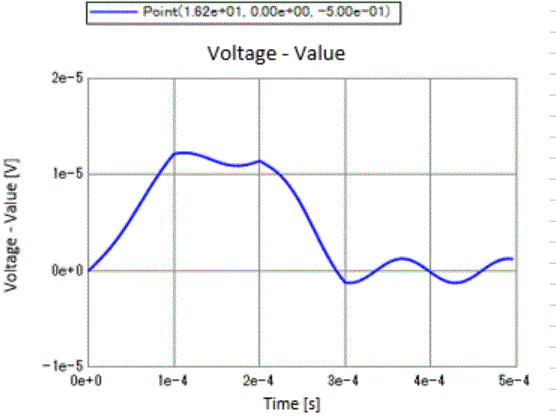
CAE Software【Femtet】Murata Software Co., Ltd.

Example27 Transient Analysis of Pressure Drive

General
-
Transient resonant analysis
-
Unless specified in the list below, the default conditions will be applied.
Analysis Space
|
Item |
Setting |
|
Analysis Space |
2D |
|
Model Unit |
mm |
Analysis Conditions
To execute the transient resonant analysis, settings on the resonant analysis tab and the transient analysis tab are required.
|
Item |
Setting |
|
Solver |
Piezoelectric analysis [Rayleigh] |
|
Analysis Type |
Transient resonant analysis |
The resonant analysis tab is set up as follows. The transient analysis tab is also set up as follows.
|
Tab |
Setting Item |
Setting |
|
Resonant Analysis |
Number of modes |
3 |
|
Approximated frequency |
0[Hz] |
|
|
Transient Analysis |
Timestep |
Select “Manual” |
|
Output steps |
1 |
|
|
Calculation steps |
100 |
|
|
Mesh |
Meshing setup/Element type |
Select rectangular (**) |
(*) For the timestep, the period of the lowest resonant frequency (8KHz) is used as the reference. In this case, it is 1.25e-4 [s]. The standard timestep is set as [period/10], but to be on the safe side, it is set as [period/25] to give more steps. (**)The triangle is the standard element for the 2D analysis. In this example, rectangle is selected to demonstrate that the rectangular mesh also can be used.
Model

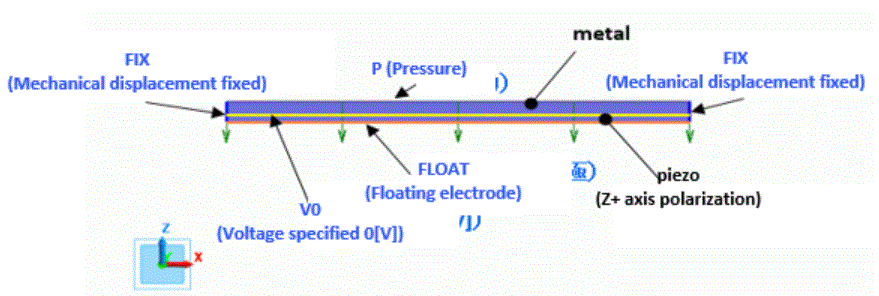
Body Attributes and Materials
|
Body Number/Type |
Body Attribute Name |
Material Name |
|
0/Face |
METAL |
001_Al * |
|
1/Face |
PIEZO |
000_P-4 * |
* Available from the material DB
Boundary Condition
The time dependency of the applied voltage is defined by weight function.
|
Boundary Condition Name/Topology |
Tab |
Boundary Condition Type |
Setting |
|
P/Edge
|
Mechanical |
Pressure |
2[Pa] Select [Time Dependency] Enter [Weight Function] as shown in the diagram below.
|
|
Electric |
Electric Wall |
Magnetic wall |
|
|
V0/Edge |
Mechanical |
Free |
|
|
Electric |
Electric Wall |
Voltage specified: Voltage 0[V] |
|
|
FLOAT/Edge |
Mechanical |
Free |
|
|
Electric |
Electric Wall |
Floating electrode |
|
|
FIX/Edge |
Mechanical |
Displacement |
UX=0.0, UY=0, UZ=0 |
|
Electric |
Magnetic wall |
|
Below are the [Weight Function] table on the Pressure tab and the graphs. Since the input pressure is 2 [Pa] and the maximum weight is 1, the maximum value of the applied pressure is also 2 [Pa].

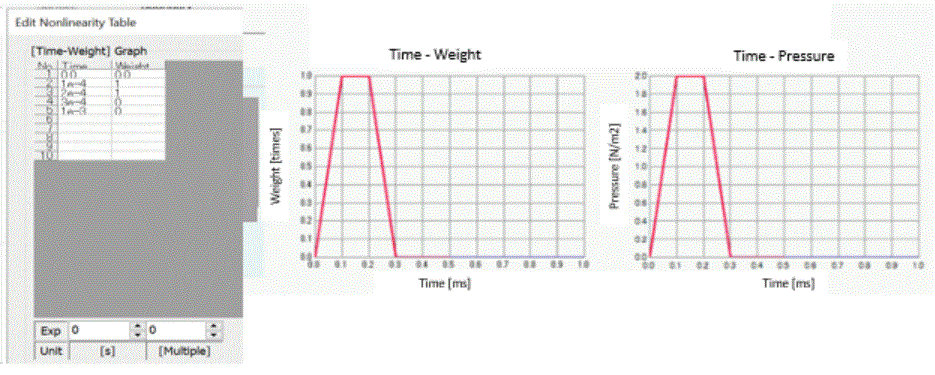
Results (Resonant Analysis)
The displacement diagram is shown below with the mesh diagram.

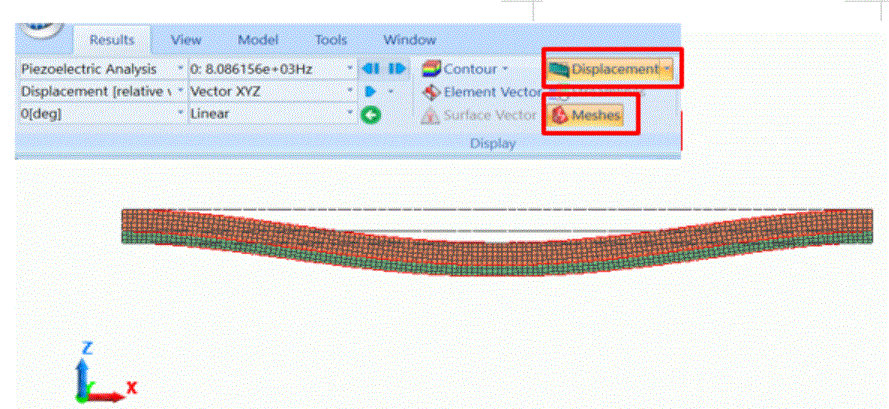
Results (Transient Analysis)
Shown below is the X normal stress of the result of the last analysis time.

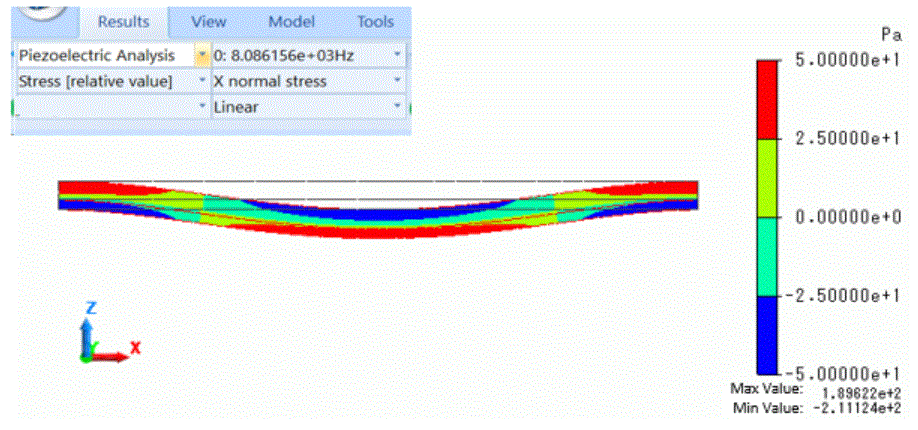
Shown below is the voltage distribution of the result of the last analysis time.

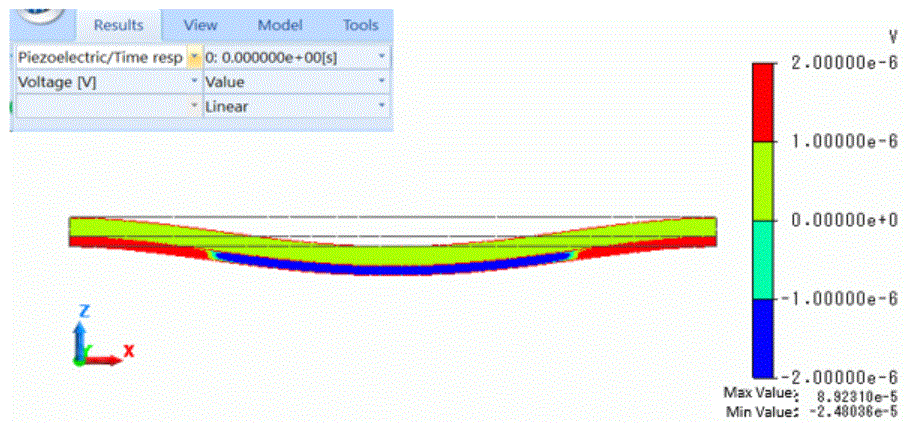
The potential change of the floating electrode over time is shown in the graph below.
The horizontal axis is the modes. The coordnates on the floating electrode are specified. The coordinates can be obtained with the mouse.
See Show Results / Fields / Field Graph for how to use graph.
